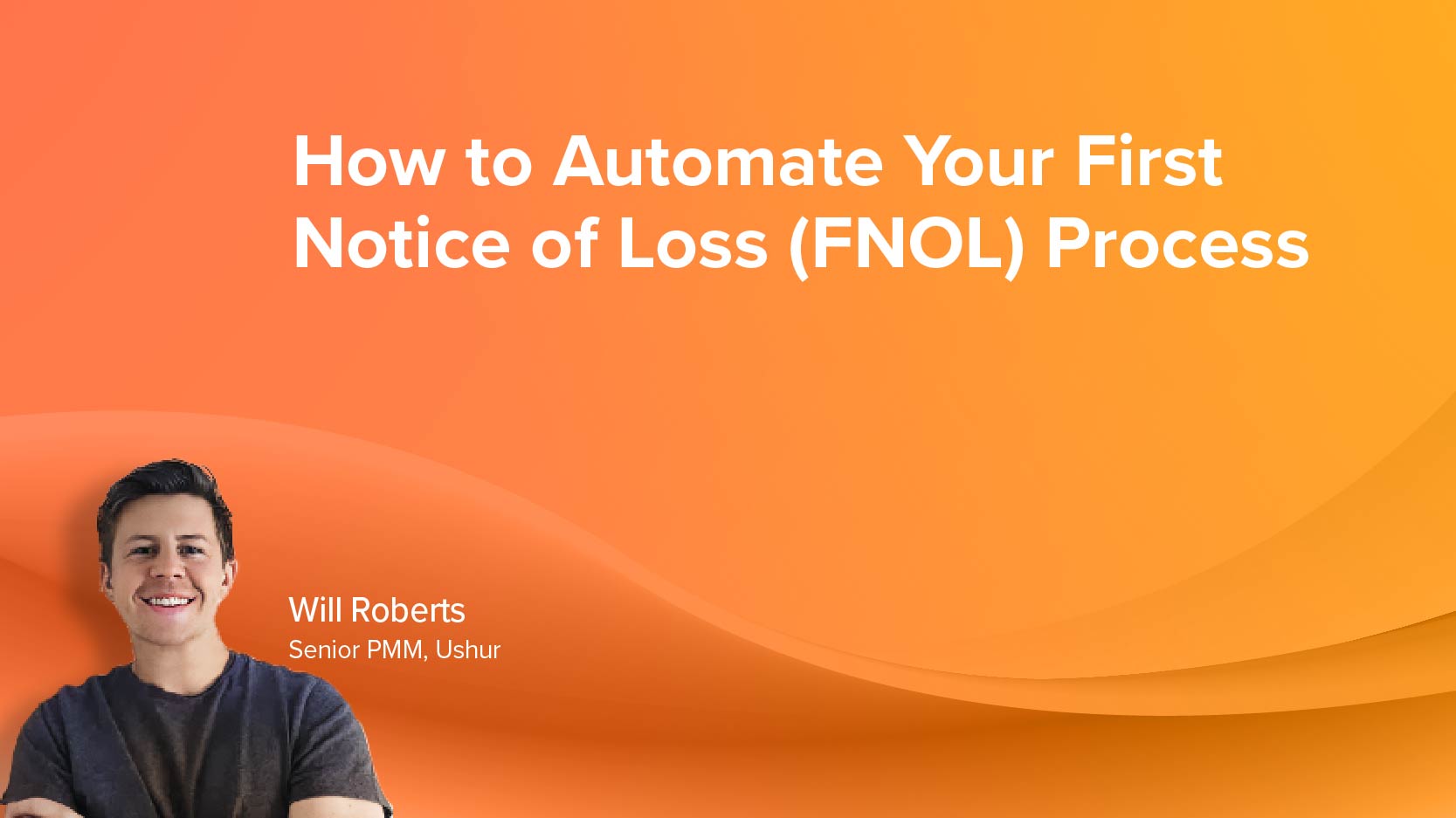How to Automate Your First Notice of Loss (FNOL) Process


Get the best, coolest, and latest posts delivered to your inbox.
First Notice of Loss (FNOL) is the first step of collecting information in an initial report from policyholders who have experienced a loss, and is an important element of an insurance carrier’s relationship with their policyholders. But when an insurance company resorts to manual data collection, they spend valuable time on non-value-added tasks while increasing the opportunity for human error, leading to delays in claims processing and extra costs.

So, how can insurance businesses tackle this issue of unnecessary delays, minimize risk, and still be responsive to their policyholders? Here’s where FNOL automation comes into play, and it is one of the tailwinds that will help carriers (McKinsey) stymie costs and fastrack growth. In this post, we discuss how to automate FNOL, how it helps reduce manual data entry, how FNOL automation boosts overall staff efficiency and agent productivity, and offer a point of view on it being just the first step in claim automation.
In today's digital-first world, customers expect quick and efficient service from insurers. At internet scale, manual processes can no longer meet these expectations and are expensive to launch and support. Luckily, since most FNOL conversations follow a similar path, there is an opportunity for insurance companies to automate and improve much of this process for their customers. Here’s how introducing automation can help you deliver an exceptional experience for insurance policyholders using automation and AI.
Digitizing claims lets insurance carriers handle large numbers of interactions efficiently and provides them with valuable process insights; as well as vast troves of data. By analyzing data patterns and trends, companies can:
While an insurance carrier generates a large amount of data during claims handling, one of the primary challenges for a carrier is ensuring their data is available in a usable format. This includes unstructured data such as customer-submitted files. Unfortunately, most analytics tools can only process structured data, leaving out crucial sources like emails, PDFs, videos, and images.
There are plenty of ways AI improves the overall quality of customers’ interactions with your agents.
Firstly, your team can use AI to extract and then input data into core systems like your CRM. Since your team doesn't have to input data manually, they can dedicate more time to processing your customers’ claim.
To further minimize the volume of inquiries a claims handling team has to handle, your team can utilize a chatbot to handle common topics and FAQs. Conversational agents today can even provide real-time updates to customers asking about their case status–and other WISMO (Where is my order?) scenarios. All this shortens the time needed from teams to manually handle an insurance claim from start to finish.
There are some portions of these customer experiences that Robotic Process Automation (RPA) has automated, but the introduction of AI in concert with RPA brings new functionality and offers several unique benefits. CXA allows for unique customer experiences that are:
shur's automated FNOL insurance is an effective solution for insurance enterprises, as it significantly cuts down processing times and operating costs. Customers can experience 24/7 availability and an 8x decrease in FNOL handling times. This can lead to up to a 90% reduction in costs.
To ensure that no essential information falls through the cracks, it's worth processing data in a single platform, which is especially important when dealing with non-text-based data like images and videos. By combining all data into one platform, insurers can easily manage and access all customer interactions, regardless of the communication channel.
In doing so, they eliminate the need for manual data entry, saving valuable time for their staff. Automating the data entry process ensures that customer information is always up-to-date and accurate, which streamlines FNOL and claims processing. Insurers can provide a more responsive and personalized customer experience, ultimately leading to higher satisfaction and retention rates.
Automating FNOL is the future of efficient and effective customer service, improving client experience and operational efficiency.
Ushur replaces static forms (online or paper) and lengthy phone interviews with a personalized and secure conversation, where the answer to each question identifies the next best one to ask. Input is streamlined by extracting data from photos and documents. And customers can be immediately connected to provider networks to expedite their repairs.Fortunately, Intelligent Document Automation (IDA) from Ushur can tackle the document interactions in this issue. These solutions help insurers transform unstructured data into a machine-readable format using Natural Language Processing (NLP) and Machine Learning techniques.
Ushur is able to handle many types of unstructured data that insurers deal with during the FNOL stage. For example, it can process information included in customer-submitted documents like:
It can also analyze images and videos from customers, which provides useful context for claims adjusters. With Ushur, insurers can recognize critical information related to the loss incident by extracting data from text-based conversations such as emails and chat logs.
The first notice of loss is just the first piece of the customer experience journey, and yet it receives the lion’s share of attention for insurance claims. There are myriad reasons FNOL gets so much attention, but that focus leaves room for customer experiences to improve in the steps that follow it (steps 2-n).
In fact McKinsey believes that automation can reduce the cost of a claims journey by as much as 30%. Those steps that stand to benefit may follow the complex process after a first notice of loss, but they also often require manual intervention, and yet are equally as important.
The steps in the customer experience that follow include helping customers understand what information is needed to resolve a claim, know what the status of their claim is, and paying out claims with the correct and up to date information of the insured. Consumer expectations for digital-first self-service and technological capabilities shift quickly and McKinsey believes the winners in the insurance market will “be those that move decisively.”
If an insurance company takes 6 months for their release cycle, the window for insurance companies to understand, build, and deploy automation can be too distant and feel vanishingly small. It is difficult to move decisively and be one of the winners forecasted by McKinsey when the demands, development timelines, and capabilities don’t align.
The first step in the insurance claims journey, FNOL, is a highly involved and yet very repeatable order of operations. It requires gathering information or documents, communicating expectations, setting timelines, and then building a relationship where insureds feel confident they are being serviced with professionalism and care.
The quality of customer experience in that engagement, and its composite micro-engagements, can dramatically change the opinions of carriers held by insureds. It also sets the tone for the rest of their relationship and expectations of service.
It is difficult to automate the many different journeys, conversations, or experiences that an insured and their carrier may have during a FNOL process, but customer experience automation (CXA) specifically focuses on making those processes easy to build and support. Conversations require the flexibility of conversational AI and standardized forms benefit from the power of document processing. Conversational automation, process automation, and document processing combine to make the FNOL process and other insurance processes deployable quickly enough for carriers to move decisively.
Learn more about our insurance automation solutions and elevate your customer service today.